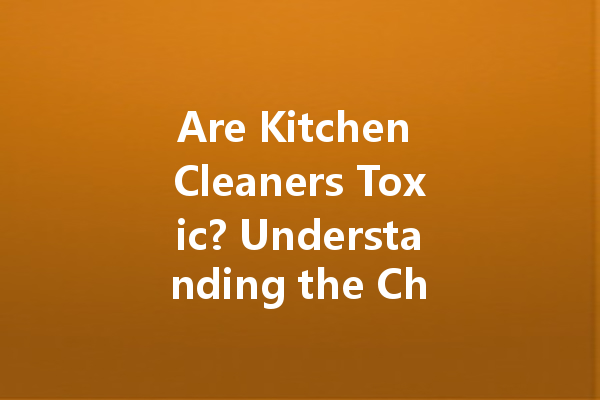소개
In our daily lives, we rely heavily on kitchen cleaners to maintain a germ-free and spotless environment. However, with various products available on the market, concerns about the safety of these cleaning agents often arise. This article aims to explore the chemical composition of kitchen cleaners, their potential toxicity, and how to create safer alternatives at home.
주방 세정제란 무엇인가요?
Kitchen cleaners are specialized products formulated to clean surfaces in your cooking and dining areas. They are designed to remove grease, food residue, stains, and bacteria. Common types of kitchen cleaners include all-purpose sprays, surface wipes, degreasers, and disinfectants. Each of these products contains specific cleaning agents that contribute to their effectiveness.
The Chemical Composition of Kitchen Cleaners
The efficacy of kitchen cleaners comes from their active ingredients. Here are some common components found in these products:
주방 세제는 독성이 있나요?
The safety of kitchen cleaners largely depends on their ingredients. While many commercially available products are safe when used according to instructions, others may contain harmful chemicals such as:
To minimize risks, always read labels and opt for eco-friendly or natural brands that limit the use of harmful substances.

How to Identify Toxic Cleaning Agents
To identify potentially toxic cleaning products, look for the following indicators:
Making Homemade Cleaning Agents
For those who prefer a DIY approach, making homemade cleaning agents can be a safer, eco-friendly alternative. Here are some recipes:
다목적 클리너
Grease Cutter
결론
While most kitchen cleaners are effective at maintaining cleanliness, their chemical compositions can pose safety concerns if not used correctly. Understanding what’s in these products helps consumers make informed choices and use them safely. By incorporating homemade cleaning solutions into your routine, you can minimize exposure to harmful chemicals, making your kitchen a safer space for cooking and dining. Always remember to read product labels and opt for environmentally friendly options whenever possible. Keeping your kitchen clean doesn’t have to come at a cost to your health!
